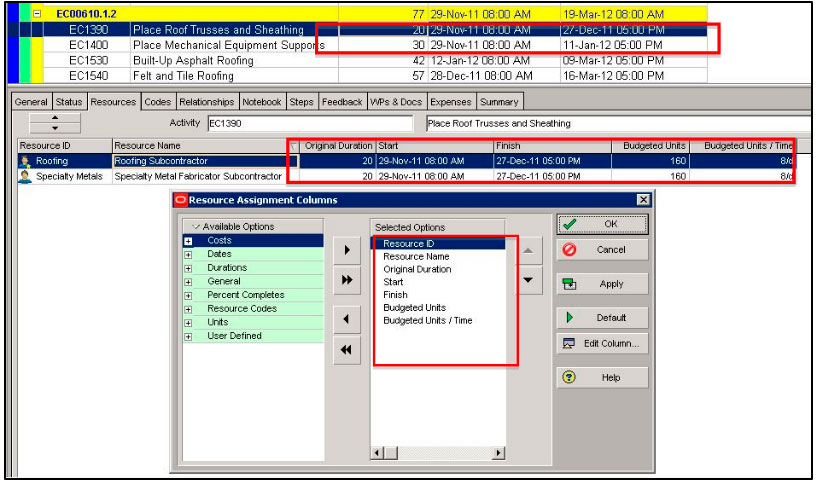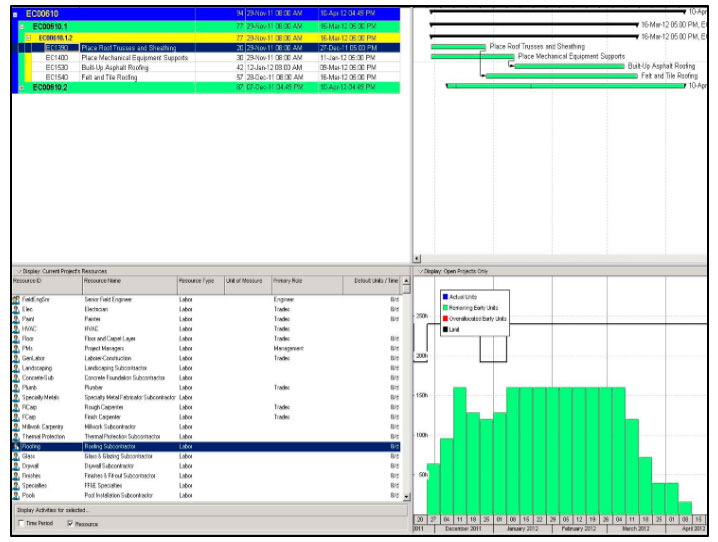ORACLE PRIMAVERA P6
DOWNLOAD THE PDF HERE
A common situation when resource loading projects is an inaccurate spread of available resources through the duration of an activity. When updating a project that is resource loaded, it is important to understand that resources are meant to be tracked automatically or manually. Automatic methods are less accurate to what is truly going on in the field. The effort going into planning resource durations and dates should be just as important as planning the activity durations and dates. A simple layout can be created to assist in analyzing your resource assignments on the activity for better planning and tracking.
You must also understand the different duration types being used and the effect on how this calculates *Activity Durations, Resource Durations, Budgeted Units and Budgeted Units/Time. For this example, tracking the resources, we will switch the duration type to *Fixed Duration and Units/Time. Once this is properly planned, you can change this back to your original duration type based on allowing the Unit/time to adjust or the actual units when the duration of the activity changes.

As we have adjusted the Duration type to fixed Units/time, this will hold the standard 8 hours per day and adjust the resource assigned original duration when the budgeted units change. This will allow the user to manually plan and track when the assigned resource will need to arrive on site to perform the work.
Next, you will need to customize your layout to show the proper columns in the resources tab. Do this by right-clicking in the Resources tab, select “Customize Resource Columns”.

Choose the columns shown below to add into the Resources tab.

You may notice the Original Duration of the resource has assumed the number of days from the Activity Duration. This is by default, and may not reflect the true duration of the specific resources needed on the activity. The dates are also aligned with the start and finish of the activity. In this example, we will say that we will need the Roofing Subcontractor for the first 15 days and the Specialty Metal Fabricator Subcontractor for the remaining 5 days.
Now that the proper columns have been brought into view, we can now adjust the Original Duration and Dates of our resources to cover the duration of the activity.

When we take a look at our Resource Usage profile, we can see a proper spread of our allocation of Roofing Subcontractor for proper allocation and planning

